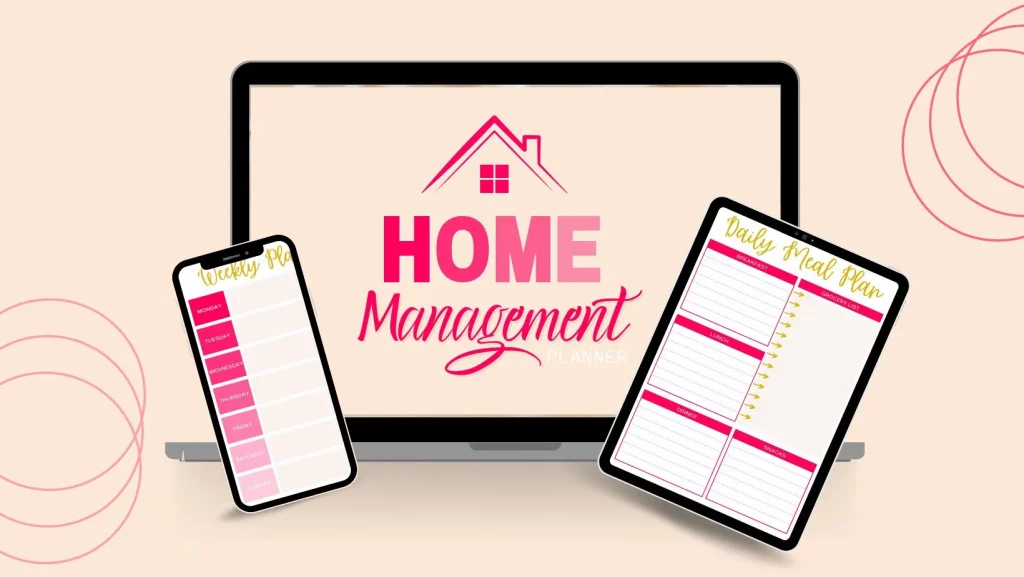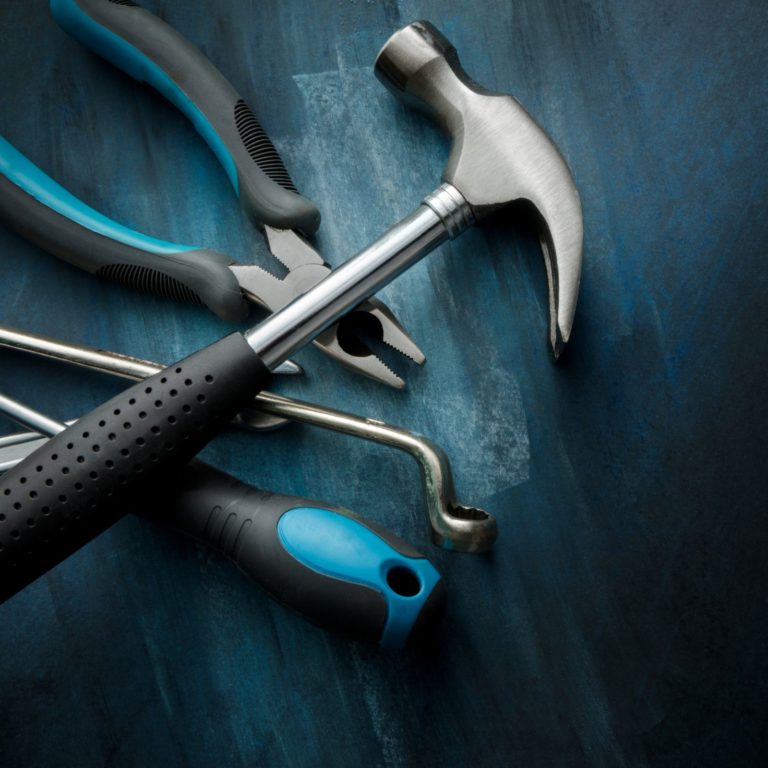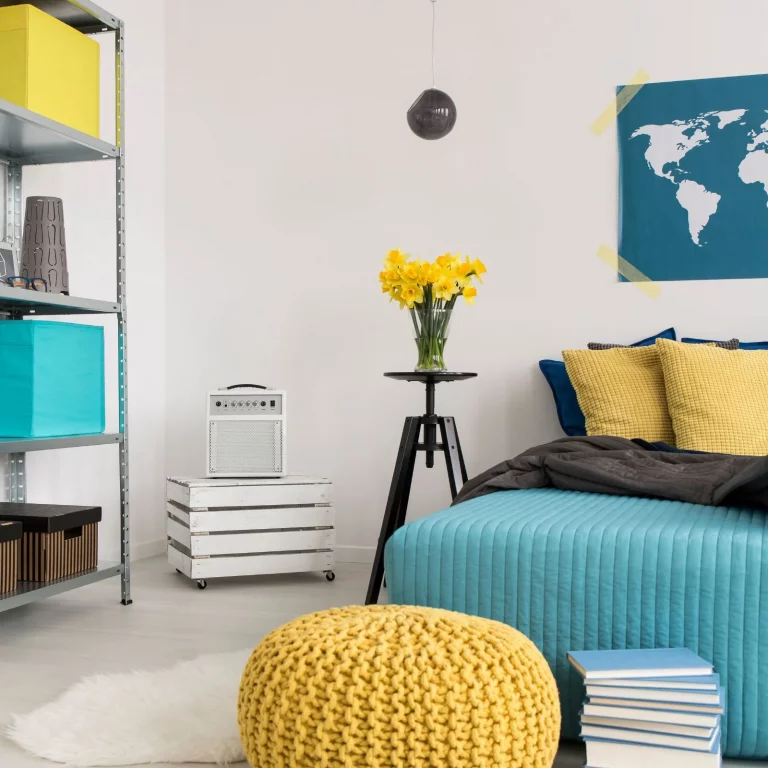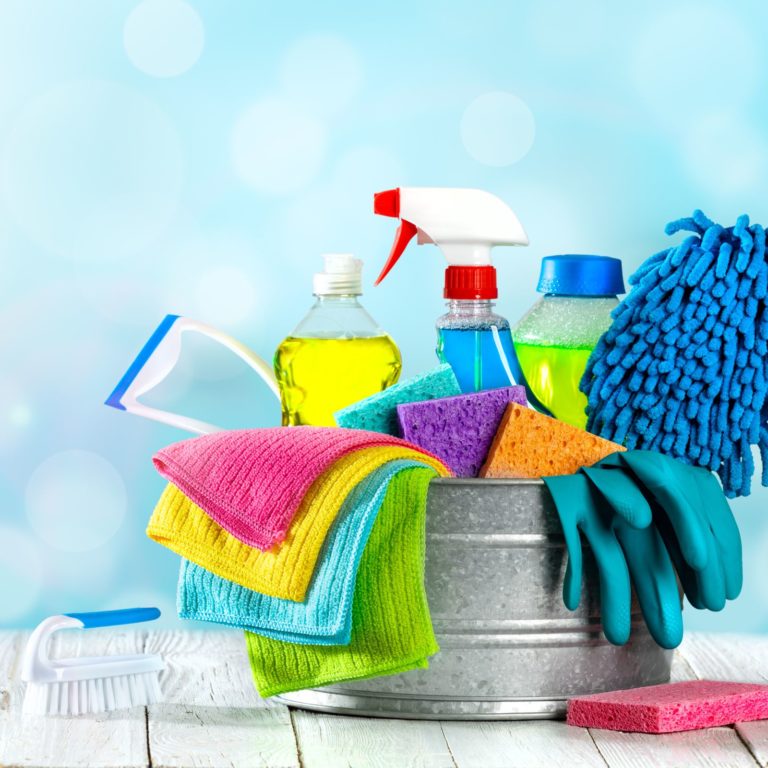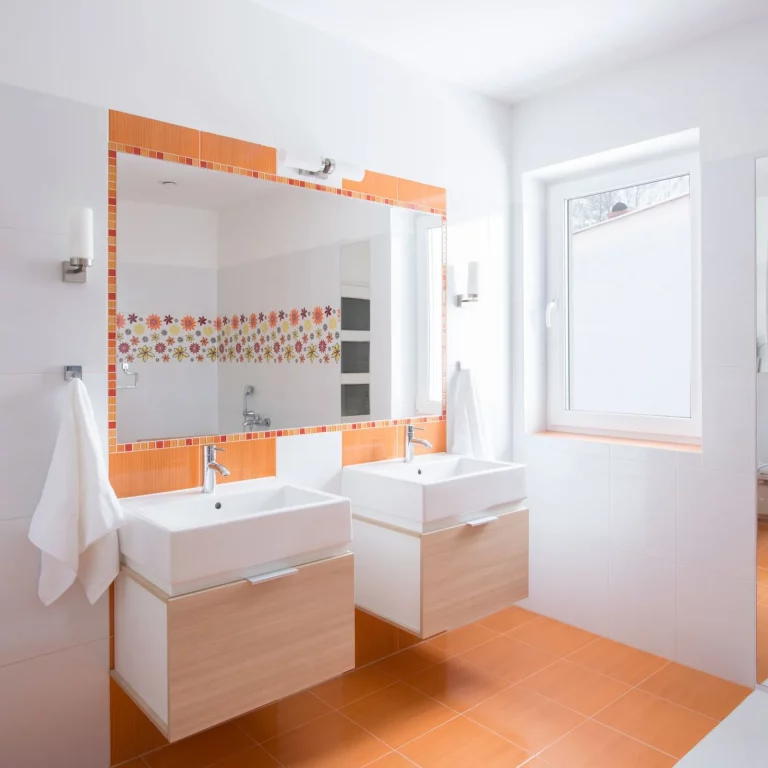19 Easy Ways to Be More Environmentally Friendly at Home
It is becoming increasingly important for people to be more environmentally friendly in their everyday lives. This is especially true when it comes to the ways in which we live at home. There are many ways that we can make small changes in our homes that will have a big impact on the environment. Here are eight of the best ways to get started.
The environment is a hot topic (pun intended), and why shouldn’t it be?
Perhaps you are looking to make an impact. If you’re looking for easy ways to be more environmentally friendly at home, we have some ideas that you can adopt.
These quick and easy changes seem like small things, but they can still put you a few steps forward!
Easy ways to be more environmentally friendly at home

Image: Amazon
1. Separate your trash
The average American uses 4.4 lbs of trash, per day. Which, if you think about it, is ridiculous. Globally, we all use around 2.6 pounds of trash. Also seems like a lot.
If you’re lucky enough to live in a city that makes recycling a priority, one way to reduce your trash output is to separate your garbage. That means putting out your recycling, separating your compost, and throwing out things that are actually trash.

Image: Amazon
2. Compost
Speaking of waste, composting is surprisingly easy. It can save you 0.42 lbs per day in garbage, plus it’s great for your plants.
If you’re not familiar with composting, it’s when you let food and other organic matter simply decompose. It turns into a nutrient-rich substance that can be used as fertilizer. You can do it in your backyard or even on your balcony.
Start with a simple composting bucket on your counter, then once a week transfer it to an outdoor composting bin. All you need is a little patience, and some earthworms if you want to get fancy!

Image: Amazon
3. Get a reusable water bottle
Plastic water bottles are terrible for the environment. We all seemingly know this, and yet in America, some 70 million bottles are still used each day.
Switching to reusable bottles can save you a ton of waste and money. Plus you also get options to pick out what you want. From BPA-free plastic to steel, glass, or even bamboo, there’s a water bottle out there for everyone.
Find one you like and make the switch. Both your wallet and the environment will thank you.

Image: Amazon
4. Bring your own coffee mug
Coffee cups are also a big waste contributor, more than 50 billion coffee cups are thrown out each year in America. Along the same lines as replacing your water bottle, you can also get reusable drink mugs that you can take on the go with you.
Many coffee shops will give you a discount for bringing your own cup, and some will even let you fill it up for free. This is one of the easiest ways to be more environmentally friendly at home.

Image: Amazon
5. Reduce your straw intake
Plastic straws produce a lot of garbage per year, and Americans throw out 500 million annually. Let’s do that one more time: 500 million per year.
If you’re concerned about your straw output and are wanting an easy way to be more environmentally friendly, consider getting reusable straws. I like them because you never run out, and they’re easy to pack in your bag if you want to bring them on the go.

Image: Amazon
6. Replace your chopsticks
Chopsticks might not be first on your mind when you’re looking for ways to be more environmentally friendly at home, but worldwide we throw out a ton of them. By a ton, we’re talkin’ 80 billion pairs annually.
If you’re someone who uses chopsticks regularly (or even just wants to be less wasteful the few times you do use them), a reusable choice is for you. Whether you want metal, wood, or otherwise, they’re affordable and readily available.

Image: Amazon
7. Ditch the paper towels
Paper towels are kind of a waste.
Not only are they built to essentially be thrown out, but they cost a lot if you think about the job they do. If you use two rolls of paper towels per month you spend $70 a year. I know it doesn’t sound like much, but it seems like suck a silly expense.
Instead, switch to a set of cute, reusable towels. There are so many cute ones to pick from, and you’re going to wash your laundry anyway… what are a few extra pieces of fabric?

Image: Amazon
8. Wash your clothes with cold water
Roughly 90 percent of the energy that it takes to wash clothes comes from heating the water. That means you can still enjoy machine-cleaned clothes but save a ton of energy by simply turning the temperature down.
If you’re worried about how clean your clothes will end up, there is specific cold-water detergent that’s built to get those bad boys fresh. What I love most about this change is you won’t even notice you’re making it.

Image: Amazon
9. Stick with showers
Everyone loves a good bath, right? But it takes around 70 gallons of water to fill a tub (depending on the size of the bath). By contrast, if you take a quick 5 to 10-minute shower you’re looking at around 10 to 25 gallons of water. Voila, suddenly you’re a bit more environmentally friendly.

Image: Amazon
10. Stop using paper
We use a lot of paper in general. From receipts to Post-its, we’ve got bins full of the stuff that usually doesn’t end up being properly recycled.
If you want to cut back on the paper you use, start small. Get a specific notebook for work or school that you only use when absolutely necessary. If a receipt is emailed to you, don’t print it out. Keep it stored away on your computer until you need it for taxes.
You can also buy eco-friendly stationery that’s made out of recycled paper. This way, if you are using paper, at least it’s not harming the environment as much as regular paper products.

Image: Amazon
11. Get some plants
Did you know that some plants help clean the air in your home? It’s true! So, not only will you have some extra greenery, but you’ll also be working to make the air quality in your home better.
Some of the best plants for purifying the air are:
- Aloe Vera
- Boston Fern
- English Ivy
- Peace Lily
- Spider Plant
If you’re brand new to plant ownership, try adding one or two to your house. In addition to helping clean the air, plants can also help boost your mood and focus. A win-win, if you ask me.

Image: Amazon
12. Make the switch to LED bulbs
LED bulbs can make a big difference in your energy and money output. Not only do they seemingly last forever, but they also use 75 percent less energy than traditional incandescent bulbs.
While they might be a bit more expensive upfront, LED bulbs will save you money in the long run. So, if you want to be more environmentally friendly and save a few bucks, switch to LED bulbs.

Image: Amazon
13. Bring your own bags
This one seems like a no-brainer, but everyone’s still learning it. Plastic bags are terrible for the environment, but Americans still use an estimated 100 billion per year. But there’s a simple solution: reusable bags.
They’re inexpensive and can be used countless times before you need to get rid of them. Drop a couple of small reusable bags in your purse or your car so you’re always prepared. This way you’re never without!

Image: Amazon
14. Recycle, upcycle, and donate
They say that one person’s trash is another’s treasure, and Facebook Marketplace proves that.
It’s easy to throw something away, but recycling, upcycling, donating, or even selling things is a better choice for everyone involved.
Yes, some items can’t be recycled, upcycled, donated, or sold, but when you have the opportunity take it. Before you throw an item out, go through the list and see if there’s something that you can do with it first!

Image: Amazon
15. Host a clothing swap party
Clothing creates a lot of waste, and it often doesn’t need to. Your style, size, and overall tastes change, but that doesn’t mean that your clothes need to be trashed.
A clothing swap party is exactly what it sounds like. You invite your friends over and everyone brings clothes they don’t want anymore. Everyone has the opportunity to take home new clothes, but you don’t have to spend any money or throw anything out.

Image: Amazon
16. Shop at thrift shops
Thrift shops aren’t everyone’s first choice, but they can be a treasure trove for the right buyers. It takes a bit of getting used to, but once you get the hang of it, you’ll find out how much money you can save.
Now, thrift shops aren’t a great choice for those with larger body sizes — shopping at thrift stores as a plus size person is more difficult.
But they don’t just have clothes. You can also find furniture, books, and so much more for a fraction of the price. Best of all, you’re giving items a second chance instead of buying something new.

Image: Amazon
17. Make your own cleaning products
Cleaning products are full of chemicals that can be harmful to you and the environment, but you need them to keep things sparkly, right? Wrong. You can avoid these chemicals by making your own. Whether you’re cleaning the kitchen or the bathroom, there’s plenty of opportunity!
There are a ton of recipes online for DIY cleaners that use simple ingredients like vinegar, baking soda, and essential oils. Not only are these cleaning products better for the environment, but they’re also typically cheaper than store-bought cleaners.

Image: Amazon
18. Bike or walk more
Keeping your car in the garage (pending you have one) is another one of the easy ways to be more environmentally friendly at home and save money. If your destination is close enough, bike or walk instead of taking the car. Not only is it a greener way to travel, but you get some exercise in too!
If you can’t bike or walk, consider a more environmentally friendly form of transportation like the bus (if you have the time). It’s not always the most convenient option, but it’s better for the environment and your pocketbook!

Image: Amazon
19. Turn off the lights and unplug electronics when they’re not in use
It might surprise you to learn that your electronics still use power if they’re plugged in, even if they’re turned off. So, a simple way to save energy is to unplug items when you leave the room and turn off the lights. This is especially the case if you’re planning on leaving for a few days… but don’t unplug the fridge or freezer!
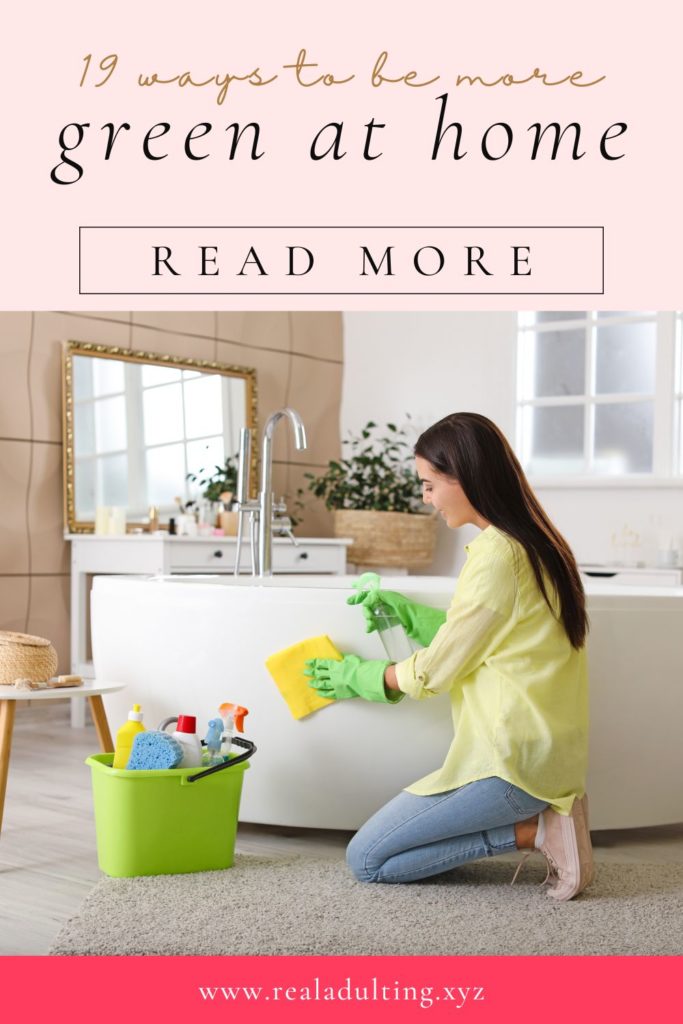
Why you should continually find ways to be more environmentally friendly at home
No one’s going to hand you a Nobel Peace Prize for taking a short shower, drinking out of metal straws and separating your garbage. But if you’re looking for small things that you can do without having to change appliances or make drastic lifestyle changes, then these things are for you.
There are a lot of people who likely disagree with this statement, but at the end of the day, who cares: every little bit counts when it comes to being more environmentally friendly.
